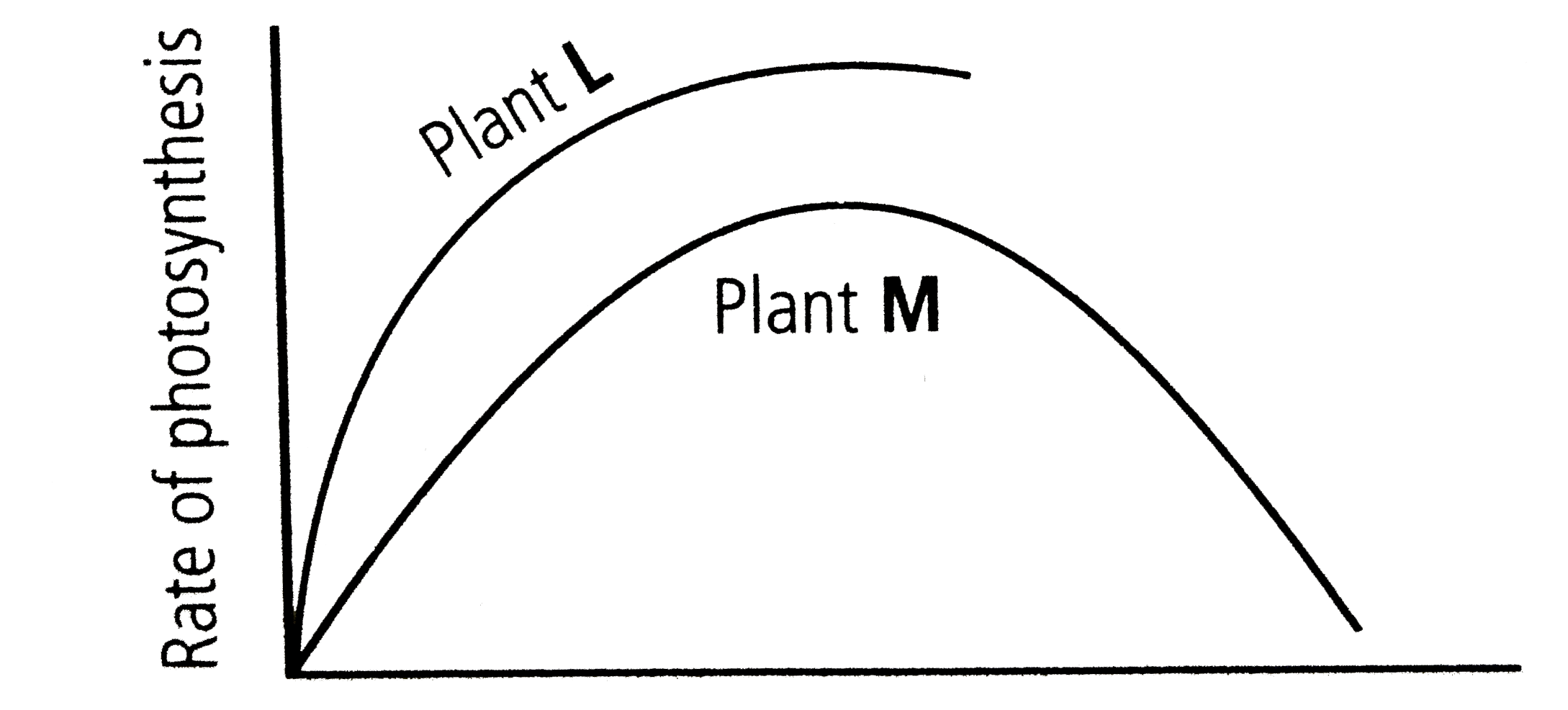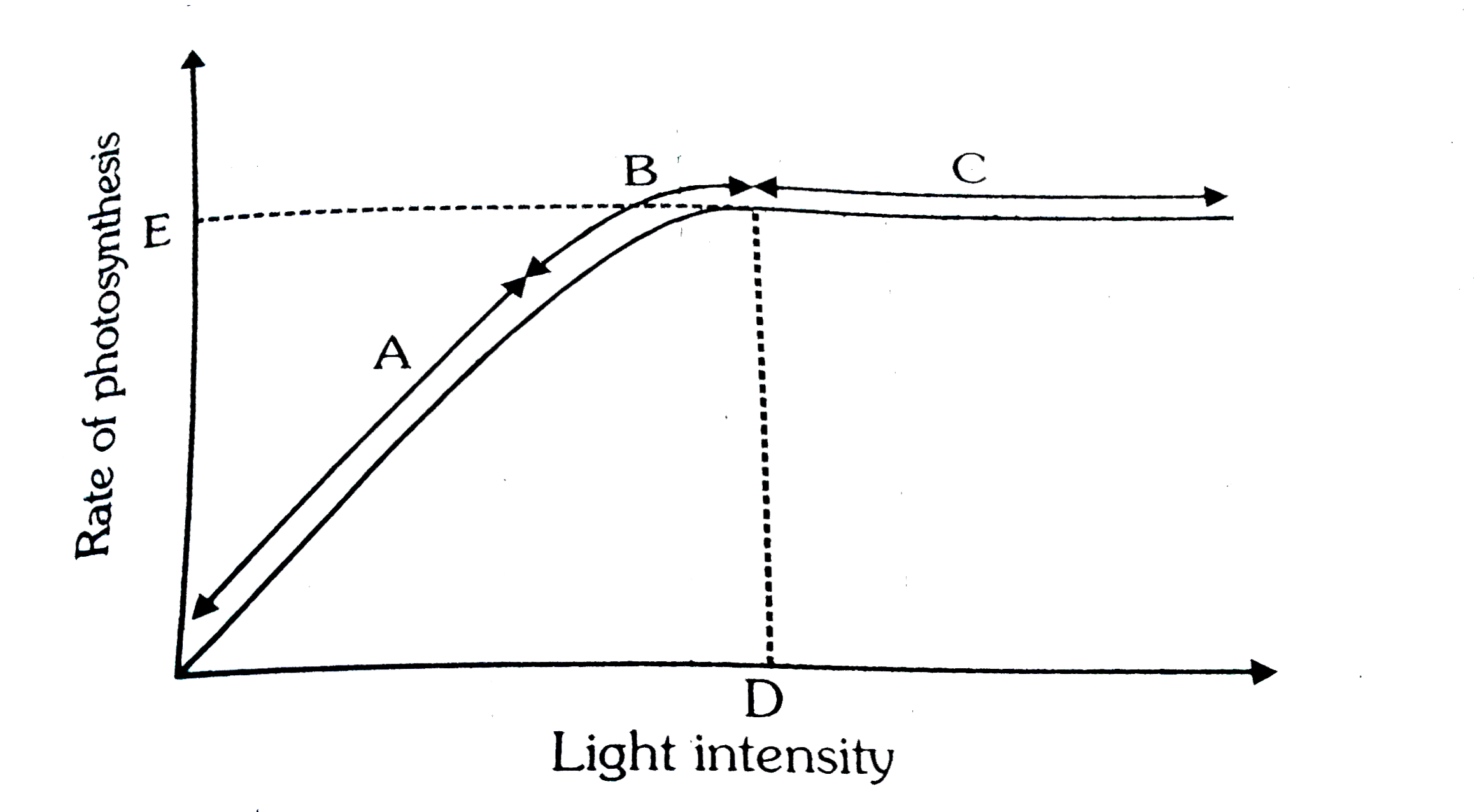[A]: Plants growing under trees show less photosynthesis.
[R]: Green light is least effective in photosyn- thesis.
If both A and R are true and R is the correct explanation of A
If both A and R are true but R is not the correct explanation of A
If A is true and R is false
If both A and R are false
The correct Answer is:A
To solve the question, we need to analyze both the assertion (A) and the reason (R) provided.
Step 1: Understand the Assertion
The assertion states: "Plants growing under trees show less photosynthesis."
- This statement is true because plants that grow under trees receive less sunlight due to the shade created by the tree canopy. Since photosynthesis requires light, reduced light availability leads to lower rates of photosynthesis.
Step 2: Understand the Reason
The reason states: "Green light is least effective in photosynthesis."
- This statement is also true. Chlorophyll, the green pigment in plants, reflects green light rather than absorbing it. Therefore, green light is not utilized effectively for photosynthesis, making it the least effective wavelength for this process.
Step 3: Determine the Relationship Between A and R
Now we need to evaluate whether R is the correct explanation of A.
- Since the assertion is true (plants under trees do show less photosynthesis due to reduced light) and the reason is also true (green light is less effective for photosynthesis), we need to see if the reason explains the assertion. However, while both statements are true, the reason does not directly explain why plants under trees show less photosynthesis. The reduced light availability is due to shade, not specifically because of the effectiveness of green light.
Conclusion
Given the analysis:
- Both A and R are true.
- However, R is not the correct explanation of A.
Thus, the correct option is: If both A and R are true, R is not the correct explanation of A.
---
The assertion states: "Plants growing under trees show less photosynthesis."
- This statement is true because plants that grow under trees receive less sunlight due to the shade created by the tree canopy. Since photosynthesis requires light, reduced light availability leads to lower rates of photosynthesis.
The reason states: "Green light is least effective in photosynthesis."
- This statement is also true. Chlorophyll, the green pigment in plants, reflects green light rather than absorbing it. Therefore, green light is not utilized effectively for photosynthesis, making it the least effective wavelength for this process.
Now we need to evaluate whether R is the correct explanation of A.
- Since the assertion is true (plants under trees do show less photosynthesis due to reduced light) and the reason is also true (green light is less effective for photosynthesis), we need to see if the reason explains the assertion. However, while both statements are true, the reason does not directly explain why plants under trees show less photosynthesis. The reduced light availability is due to shade, not specifically because of the effectiveness of green light.
Given the analysis:
- Both A and R are true.
- However, R is not the correct explanation of A.
Topper's Solved these Questions
Similar Questions
Wavelength of light least effective in photosynthesis is
View SolutionWhich of the following statement is / are incorrect ?
(i) Green light falling in the range of wavelength 500 -580 nm is least effective for photosynthesis.
(ii) In non - cyclic photophosphorylation, the electron expelled from the reaction centre is not cycled back , though its loos is compensated by electrons from the photolysis of water .
(iii) Chl a , Chl b , carotenoids , and xanthophylls are insoluble in organic solvents.
(iv) 400-700 nm light is used in photosynthesis also known as PAR.
(v) Red light is the most effective for photosynthesis.View Solution
Knowledge Check
- Question 1 - Select One
Study the following statements.
(i) Red light falling in the ragne of wavelength 660-760nm is the most effective for photosynthesis.
(ii) Green light falling in the range of wavelength 500-580 nm is the least effective for photosynthesis.
(iii) Chl a,chl b carotenses and xanthophylls are soluble in organic solvents.
(iv) Phycobilins (phycocyanin, allophycocynin and phycoerythrin) are soluble in water
Which of the above statements is/are incorrect?Aii and iiiBiii and ivCi onlyDNone of these - Question 2 - Select One
When two plants L and M were exposed to different light intensities and temperature they showed changes in their rates of photosynthesis. Which have been represented in the following graph.

The graph indicates thatAPlant L is a C3 plant for which the light saturation point is 100% of full sunlightBPlant M is a C4 plant for which the optimum temperature s around 20∘CCPlant M is a C3 plant which is more affected at higher temperature and higher light intensity as compared to palnt LDplant L is a C4 plant and cannot function at light intensities above the saturation point. - Question 3 - Select One
Read the following statements and select the correct ones.
(i) All the colour components of the visible spectrum are available for marine plants living in different depths of the ocean.
(ii) Many herbs and shrubs in rainforests adapt to photosynthesise optimally under very low light conditions as they grow under canopy trees
(iii) Gradual increase in average global temperature will affect the distributional range of some species.
(iv) The quality of soil does not depend upon the weathering process.A(i) and (ii)B(ii) and (iv)C(ii) and (iii)D(i) and (iv)
Red algae show maximum photosynthesis in blue green light. Their main pigment to trap this light is
View SolutionBlue and red light are equally effective in photosynthesis but blue light is less efficient because
View Solution(i) Draw a neat and well-labelled diagram of the chloroplast.
(ii) List the events taking place in the photo chemical phase of Photosynthesis.
(iii) If you are planning an experiment to show the effect of light on the photosynthesis :
(1) Will you select white light or green light ? Justify your answer.
(2) Why would you select a destarched plant?View SolutionObserve the given graph carefully and choose the correct statements for labelled points, (A to E)
 Points:-
Points:-
(A)- There is a linear relationship between incident light and CO2 fixation rates.
(B)- It is a transition poit where limiting factor changes.
(C)- At this region light intensity is not showing detrimental effect on rate of photosynthesis.
(D)- It shows light saturation point sunlight except for plants in shade or in dense forests.
(E)- This point show maximum rate of photosynthesis at optimum presence of various parameters.View SolutionWho discovered that green plant parts and light are essential for photosynthesis ?
View Solution

